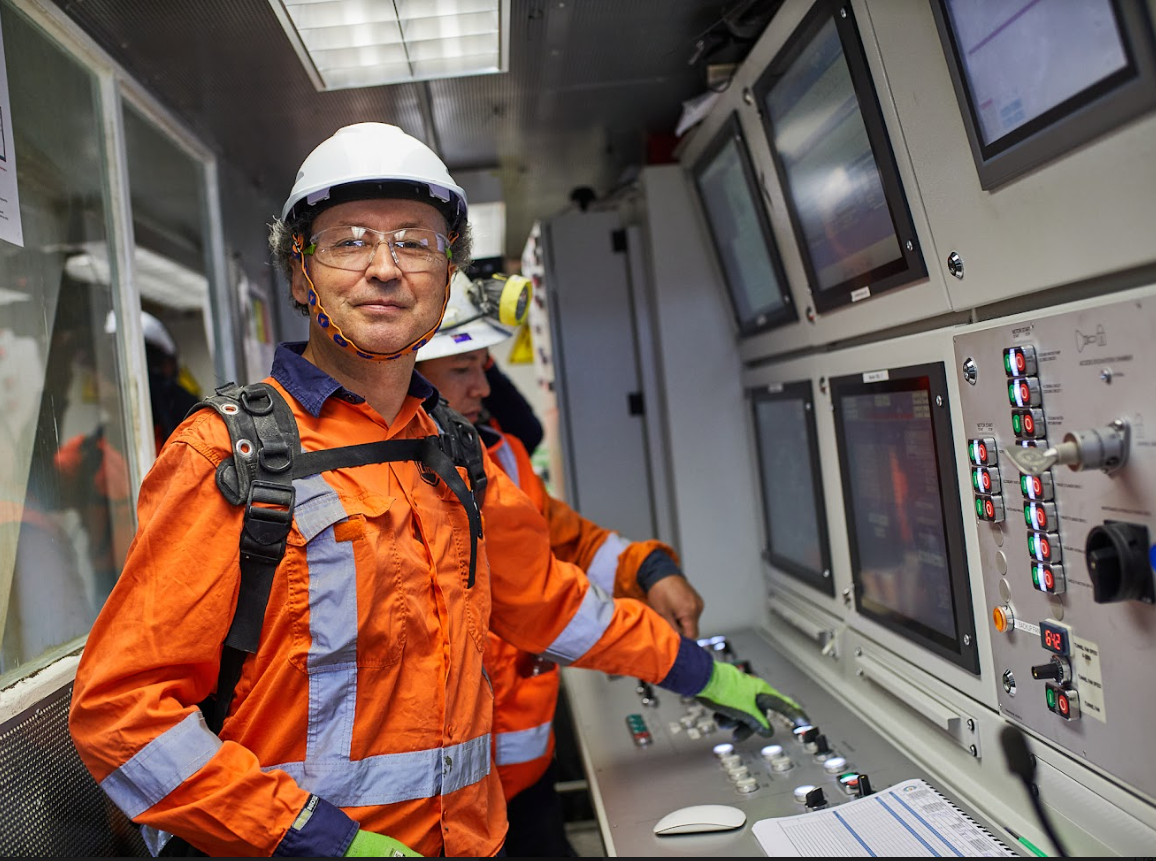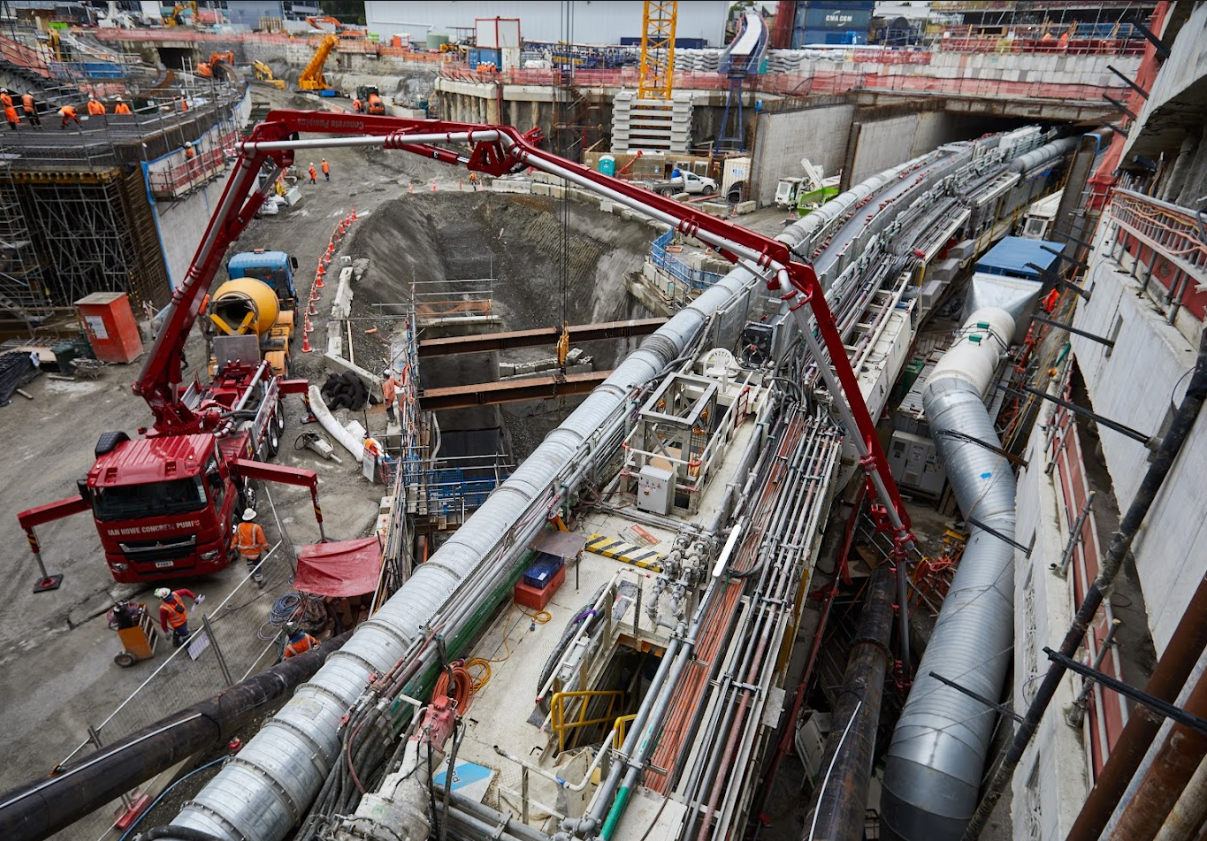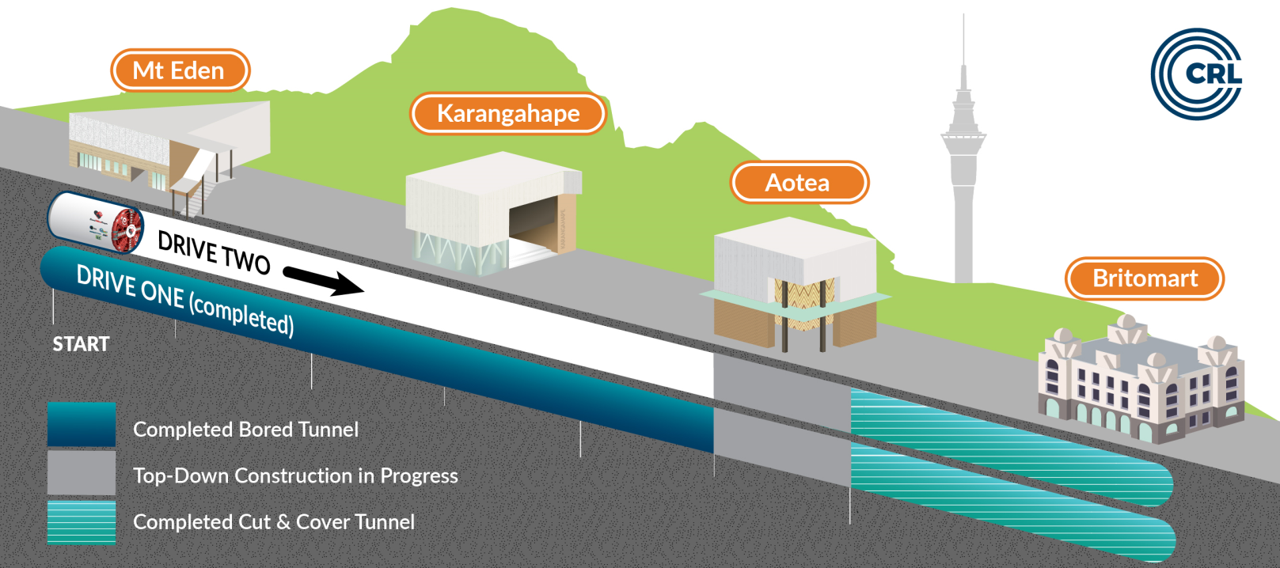TBM Underway again! Dame Whina Cooper sets off on second tunnel dig



Karakia and prayer celebrated the start of the second transformational journey City Rail Link’s Tunnel Boring Machine (TBM) will make below Auckland’s skyline to build the country’s first underground railway.
The TBM, named in honour of Māori champion Dame Whina Cooper, started its subterranean drive from CRL’s Mt Eden site into the central city this month. Its first destination will be the underground station below Karangahape Road before a planned arrival next spring at the project’s Aotea site.
“Fantastic teamwork by the TBM crew to get cracking today despite all that omicron could throw at us is a great achievement and something Aucklanders should rightly celebrate as we take a huge step towards completing CRL,” said CRL Ltd’s CEO Dr Sean Sweeney.
Dame Whina Cooper is operated by the Link Alliance – the six national and international infrastructure companies delivering CRL’s main tunnels, stations and rail systems contract. It completed the first of the two CRL tunnels just a few days before Christmas last year.
An impressive multi-tasker, 130-metre-long TBM completes three jobs: cutting through the earth, removing the spoil by conveyor built to the surface, and installing the concrete segments - 14,735 in total – that will line the twin rail tunnels. There will be a crew of 12 working each shift on the TBM, supported by another team of around 12 above ground.
In keeping with mining tradition, big machines working underground are named after a significant woman to honour St Barbara, the patron saint of miners. New Zealanders helped pick the TBM’s name Dame Whina Cooper after the well-known champion of Māori land and social rights.
TBM facts
City Rail Link’s Tunnel Boring Machine (TBM), Dame Whina Cooper, has started excavating the second of two 1.6-kilometre-long tunnels from Mt Eden to central Auckland
The TBM will travel via the underground station under construction below Karangahape Road and is planned to arrive at the Aotea construction site in early spring
The TBM completed its first excavation just before last Christmas and was then dismantled and returned to Mt Eden and reassembled to excavate the second tunnel
The two CRL tunnels are parallel and run underneath some of the city’s most iconic areas, such as Grafton, the central motorway junction, Karangahape Road and the city centre
The TBM works 24/7, operated by a crew of 12 underground and a team of 12 above ground
The TBM multi-tasks underground: excavating the tunnels, removing dirt and rocks to the surface, and installing precast concrete panels that line the tunnel walls
At peak operation, the TBM can travel 32 metres a day
The machine’s diameter is 7.15 metres (an adult giraffe is about six metres tall), weighs 910 tonnes (that’s roughly the combined weight of nine blue whales, the largest animal ever known to have existed), and the total length is 130 metres (a rugby field is up to 120 metres)
The TBM was custom built for central Auckland soil conditions by the German tunnel machine company, Herrenknecht, for the Link Alliance – the group of New Zealand and international companies responsible for the main CRL contract
To honour St Barbara, the patron saint of miners, machines working underground are traditionally named after women of significance and mana – New Zealanders helped CRL chose the name that honours Dame Whina Cooper, the Māori rights champion
An Aotea team member gifted a hard hat painted with Dame Whina Cooper’s image to the TBM crew. The hard hat symbolises the commitment to protecting people’s health, safety and wellbeing, and the connection between each of the project’s main construction areas – Mt Eden, Karangahape and Aotea
While the TBM is underground, people above it will feel little to no impacts. This is because it is an Earth Pressure Balanced TBM – it controls and balances the pressure of the earth it excavates which stabilises the tunnel face and reduces the possibility of settlement occurring.
